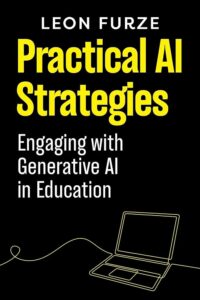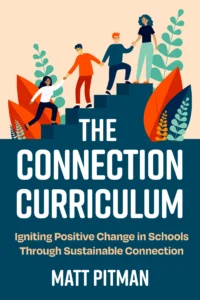Many readers of this blog would know that teacher shortages have reached a crisis point, with Australia experiencing a significant shortfall in the number of teachers needed to meet the growing demands of the education system (source: https://www.aeuvic.asn.au/teacher-shortages-reach-crisis-point). One of the contributing factors to this shortage is teacher burnout, which results from teachers experiencing high levels of stress and poor wellbeing.
In her book “Teacher Wellbeing: A Real Conversation for Teachers and Leaders”, Amy Green offers a comprehensive guide to addressing this problem by providing practical strategies and insights for teachers to better manage their physical, mental, and social wellbeing. She argues that focusing on subjective wellbeing alone, such as engaging in activities that provide instant gratification, is not enough to sustain long-term wellbeing. Instead, teachers need to engage in psychological wellbeing solutions that allow them to build resilience and cope with the stressors of their job.
Green breaks down wellbeing into three key areas: physical, mental, and social. She argues that wellbeing is about how teachers manage all aspects of teaching, and it’s much more than just taking a break for morning tea. Teachers spend a significant amount of their waking hours at school, which means their wellbeing impacts how they teach and perform. When teachers have flourishing wellbeing, they can actively take care of their physical, mental, and emotional health, leading to improved engagement, productivity, and performance.
The topic that I was most interested in was what can be done at a school level. Green proposes that to increase teacher engagement, teachers need to be involved in the design of the systems, structures, and processes they work with and how their time is spent. They need to know that there is flexibility in the ever-changing circumstances they experience, and that their opinions and concerns are heard and taken into account. Teachers become disengaged when work becomes too stressful and overwhelming, which negatively impacts school culture. Therefore, to maintain high levels of engagement, school leaders need to ask and listen to what their teachers need, be flexible when things out of their control arise, and continually review and respond to situations that may be causing teachers stress. Teams and leaders need to reflect on and improve ways of doing things that may inhibit productivity. Teachers need to be open and willing to reflect on their performance and set goals.
My big takeaway, as someone who is working at the executive level, was that it is crucial to cultivate collective efficacy among colleagues, teams, schools, and networks to achieve success in the education space. This involves developing a shared belief that the work can be done, fostering confidence, and having the knowledge that one can make a difference and create a positive impact together.
Overall, Amy Green’s book provides valuable insights and practical strategies for teachers to manage their wellbeing and for school leaders to create a supportive work environment. The book highlights the importance of addressing the issue of teacher burnout and its impact on the education system. By focusing on psychological wellbeing solutions, building resilience, and cultivating collective efficacy, schools can improve teacher engagement, productivity, and ultimately provide better educational outcomes for students. The book serves as a valuable resource for educators at all levels who are looking to prioritize their wellbeing and create a positive impact in their school communities.





